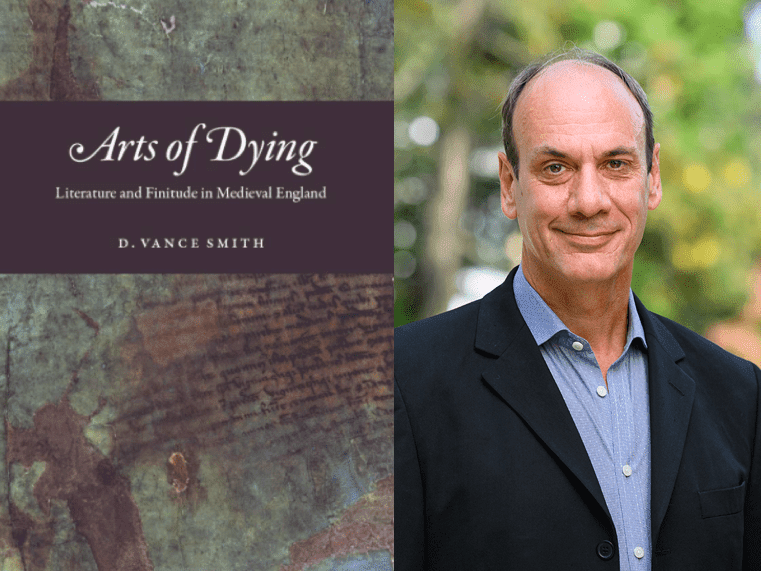Vance Smith is Professor of English. His book “Arts of Dying: Literature and Finitude in Medieval England” was published by University of Chicago Press in April 2020. This retrospective Q&A is part of an effort to acknowledge all the wonderful books published early in the pandemic.
How did you get the idea for this project?
I wrote two books in rapid succession about the anthropology of limits in medieval literature. The first was on beginning, the second on dwelling. The chapters in the second book kept ending with death and dying, so I realized I needed to write a book about that, to complete the circle. As I read the possible texts for the book, I noticed that many of them drew a distinction between death and dying. For these texts, dying is an ongoing, unfinished process for which the act of writing was a way to think otherwise. In poetry, especially, the topic of dying doubled back on the question of what made poetry different from prose and didactic rhyme. I realized that there was a kind of aesthetic question buried in all of that: poetry offered a way of thinking cryptically—placing pressure on specific terms and the structure of language—that made its form, its complicated textures, a way of trying to represent death, which is both a definite limit and unknowable. Medieval philosophy argues that death–but not dying–is also unrepresentable, and poetry, as T.S. Eliot more or less says, is also a raid on the inarticulate.
How has your project developed or changed throughout the research and writing process?
It changed the most after it was published. The book is about the way the medieval thinking about death shaped writing over a 600-year span, but the center of it is the profound change that the Black Death brought. The book appeared in March, 2020, right at the start of the COVID pandemic, and immediately had a horrible relevance that I could not have known about. But it suddenly became a “pandemic book,” and I started getting requests to talk about it and to write articles on pandemic. Writing the book took me about ten years, because the subject is both conceptually and—above all—emotionally difficult. I kept rethinking how to write the book. Because it is about the way that language responds to the inconceivable, I found it very difficult to keep my writing from getting swept up in that impulse. Several versions of it were unusual, even radical, in formal terms, and I knew I could not get a medieval book that looked like that published.
What questions for future investigation has the project sparked?
Well, the short answer is nothing directly. I’m finishing a book on Africa and the Middle Ages, and starting one on the flower industry and colonialism. As I mentioned in the preface to this book, however, its long gestation was not unrelated to the resonance of the topic with my struggle with bipolar depression at the same time. Most friends and colleagues were supportive and loving, but I found it was difficult to pick up the pieces of my career afterwards. Academia—at the level of both individual and institutional biases—still has further to go than I would have thought. I am speaking out, and hope to continue to act, because I want to call attention to a kind of disability that the Academy can do better at supporting. So the most direct answer to this question is: further investigation into why academic institutions still do not support the full spectrum of disabilities defined by the Americans with Disabilities Act—and help for those who cannot or dare not seek help.
Why should people read this book?
Although this is a book about medieval literature, my ideal audience was people interested in continental philosophy—and, of course, any medievalists who care to think about contemporary philosophy. It wasn’t a brilliant idea from a purely marketing standpoint. The overlap on a Venn diagram of potential audiences isn’t massive. But I’ve been hearing from an unexpectedly wide range of readers: psychoanalysts, magazine editors, presses, philosophers (mainly outside the U.S.), even a theologian who wrote to say he’s using my book as part of his Lenten meditations. This book really is a meditation about dying, and ultimately how it’s a matter of intense care. The books discusses 600 years of literature, but it really concerns how literature is shaped by, and also thinks through, the difficulty of thinking about something beyond the end.
Learn more about other publications by Princeton University faculty in the humanities by exploring our Faculty Bookshelf.
















